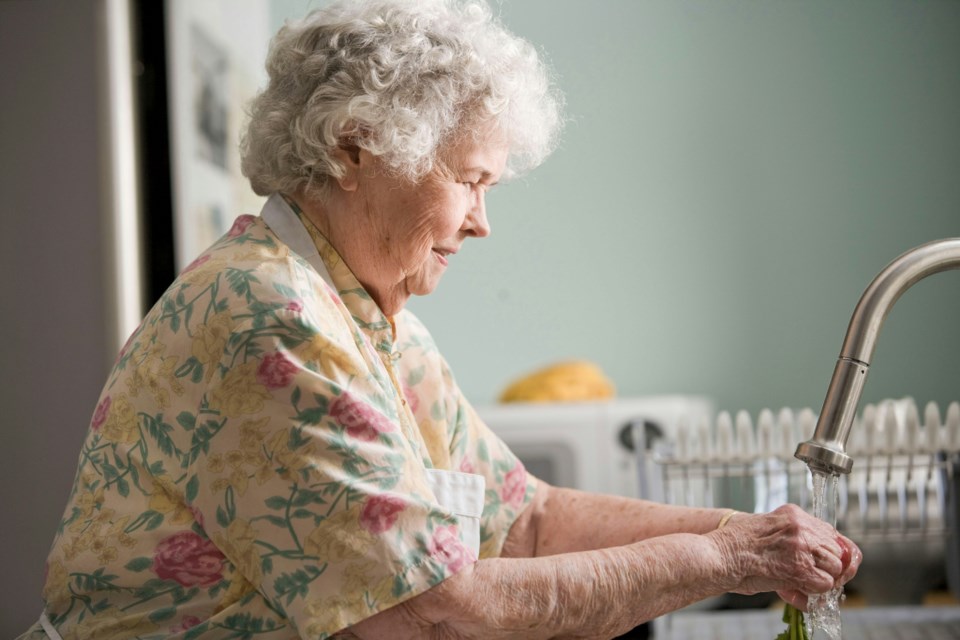Seventy-five per cent of health care in Canada is provided at home by unpaid family caregivers. Not only is this essential health-care work often unrecognized and under-supported, it is rapidly changing.
Since the COVID-19 pandemic, many health-care appointments have shifted to telephone and videoconferencing. This change in the mode of health-care delivery has now become more fully integrated into the Canadian health-care system.
While a lot of policy and research has focused on the impact of this transition on doctors and patients, these changes also have important implications for caregivers.
With a growing portion of Canadians opting to age in place at home, family members will increasingly be relied upon to provide care. However, unlike professional health-care workers, family caregivers are generally not compensated for their labour.
In fact, the act of caregiving is associated with personal costs. Caregivers often must take time away from paid work to provide care, which in turn affects their financial security. Notably, women make up the major share of caregivers in Canada.
To better understand the needs of caregivers, our research team reviewed existing studies, and conducted interviews and workshops with caregivers and others taking part in virtual health. Our findings shed light on how virtual care has so far interacted with existing inequities to create opportunities and challenges for caregivers.
The impact of virtual care
For example, virtual care has reduced the economic costs of attending appointments by lessening the need for caregivers to take time off work. It has also expanded caregiver networks, allowing those living at a distance to be involved in a loved one’s care, and opened new avenues for caregivers to find supportive communities and services online.
However, caregivers also report encountering challenges with virtual care. Among these are experiences overcoming the “digital divide,” which acknowledges differences in access to technology (such as limited internet access) and/or a lack of operational knowledge of digital devices.
Although technology and internet usage have become increasingly ingrained in the day-to-day lives of Canadians, individuals living with limited incomes, or who live in remote areas, still face barriers to reliable internet.
Our research suggests this limits options for accessing virtual forms of health care. Meanwhile, some patients who have more limited knowledge of digital technology rely on a caregiver to facilitate virtual appointments.
Other challenges with virtual care identified by caregivers include difficulty establishing rapport with a clinician during virtual meetings. This can be especially true for those without a designated family physician, who instead regularly meet with virtual walk-in doctors.
For Indigenous communities, this lack of a consistent point of care undermine efforts to access care that is free from racism, stigma and discrimination — something that is largely achieved through the long-term establishment of trusting relationships with patients and their caregivers in a community setting.
For caregivers of diverse languages, we found that virtual appointments outside of formal health-care spaces where interpretation services are more readily available often mean that they are called upon to translate language and cultural nuances with clinicians, adding to their responsibilities as caregivers.
Barriers and stressors
Navigating new virtual health-care tools can also create new stressors for caregivers. For instance, uncertainty as to where and how to follow up with a clinician, or concerns related to privacy and confidentiality. These concerns, amidst other barriers, can compound feelings of anxiety for caregivers already grappling with the stress of their loved one’s care.
One community support worker we interviewed for our study noted that most caregivers in their program were seniors themselves, who were taking care of a spouse or an elderly parent. “So, they are seniors, too … they may not have the technology skills to access to the virtual care.” This includes hardware. The support worker noted that older caregivers may not have smartphones, tablets, laptops or even internet. This can create a financial barrier as well as a technological one: “For some low-income seniors, it’s very difficult,” they said.
These experiences make clear that, although virtual health care brings new opportunities that can alleviate access barriers for caregivers, there is also a risk of new challenges being introduced.
Health policymakers and clinicians must be attentive to caregivers’ unique needs if we are to have truly equitable models for virtual care. Meaningful engagement with caregivers of diverse socioeconomic and cultural backgrounds is a necessary first step.
![]() Alexandra Selinger receives funding from the Canadian Institutes of Health Research.
Alexandra Selinger receives funding from the Canadian Institutes of Health Research.
Julia Smith receives funding from the Canadian Institutes of Health Research, Social Sciences and Humanities Research Council of Canada and Health Research BC
Lindsay Hedden receives funding from the Canadian Institutes of Health Research, Social Sciences and Health Research BC.
Muhammad Haaris Tiwana receives funding from the Canadian Institutes of Health Research, and Social Sciences and Humanities Research Council of Canada.


.JPG;w=120;h=80;mode=crop)

